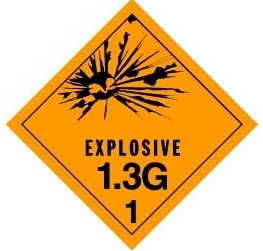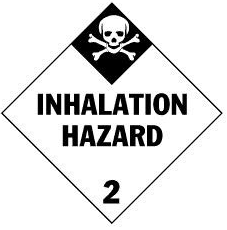 Dangerous or hazardous goods are substances that have the potential to harm people, property, or the environment if they are released from containment. Many of these substances are subject to chemical regulations by governments or international organizations. These materials are sometimes referred to as hazardous materials (HAZMAT for short). Response teams specifically trained to handle these types of dangerous goods are often called hazmat teams; these teams may consist of personnel trained to contain materials that are radioactive, flammable, corrosive, oxidizing, biohazardous, or toxic.
Dangerous or hazardous goods are substances that have the potential to harm people, property, or the environment if they are released from containment. Many of these substances are subject to chemical regulations by governments or international organizations. These materials are sometimes referred to as hazardous materials (HAZMAT for short). Response teams specifically trained to handle these types of dangerous goods are often called hazmat teams; these teams may consist of personnel trained to contain materials that are radioactive, flammable, corrosive, oxidizing, biohazardous, or toxic.Methods for indicating the presence of dangerous goods vary from place to place. In the United States, a specific type of characteristic signage is used. This sign consists of a diamond with four parts, each of which indicates the level to which a material is hazardous in a specific way (i.e. red indicates flammability).
Hazardous Materials in Transport — Regulation
 Regulations for the transportation of hazardous materials also vary by government and region, although some international organizations provide guidelines and regulations about how to classify and document hazmat transportation. The UN in particular provides a standardized model for classifying dangerous goods by type and level of danger, as well as some guidelines about how to identify these different classes of hazardous materials. The United States Department of Transportation (DOT) has its own classification system tied closely to the UN model. To assist in emergency response, all hazmat transportation must carry a four digit UN guide number; the DOT Emergency Response Guidebook suggests combining this number with standardized logs of hazmat information to determine the nature of a hazardous material in an emergency.
Regulations for the transportation of hazardous materials also vary by government and region, although some international organizations provide guidelines and regulations about how to classify and document hazmat transportation. The UN in particular provides a standardized model for classifying dangerous goods by type and level of danger, as well as some guidelines about how to identify these different classes of hazardous materials. The United States Department of Transportation (DOT) has its own classification system tied closely to the UN model. To assist in emergency response, all hazmat transportation must carry a four digit UN guide number; the DOT Emergency Response Guidebook suggests combining this number with standardized logs of hazmat information to determine the nature of a hazardous material in an emergency.Hazardous Materials in Transport—U.S. Classification
 The U.S. in particular uses its own system (derived from the UN model) to classify hazardous materials in transportation. Different types of hazardous materials are divided into classes based on their type (i.e. class 1 consists of explosives, class 2 of gases, class 3 of flammable liquids, etc). Each class also contains subclasses, based on more specific information about the substance. The subclass in particular is an indicator of a material’s sensitivity, and the level of danger it creates For example, class 1.1 explosives are those that present a mass explosion hazard and are thus highly dangerous, while class 1.6 explosives are extremely insensitive and unlikely to be dangerous except in extenuating circumstances.
The U.S. in particular uses its own system (derived from the UN model) to classify hazardous materials in transportation. Different types of hazardous materials are divided into classes based on their type (i.e. class 1 consists of explosives, class 2 of gases, class 3 of flammable liquids, etc). Each class also contains subclasses, based on more specific information about the substance. The subclass in particular is an indicator of a material’s sensitivity, and the level of danger it creates For example, class 1.1 explosives are those that present a mass explosion hazard and are thus highly dangerous, while class 1.6 explosives are extremely insensitive and unlikely to be dangerous except in extenuating circumstances.Works Cited
"Hazardous Materials." Federal Motor Carrier Safety Administration. U.S. Department of Transportation, n.d. Web. 13 Apr. 2016. <https://www.fmcsa.dot.gov/regulations/hazardous-materials>.
2012 Emergency Response Guidebook: A Guidebook for First Responders during the Initial Phase of a Dangerous Goods/hazardous Materials Incident. Washington, D.C.: U.S. Dept. of Transportation, Research and Special Programs Administration, 2012. Print.








